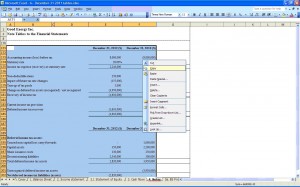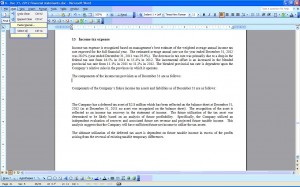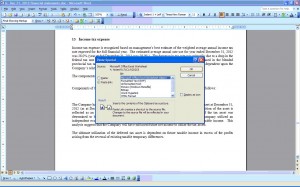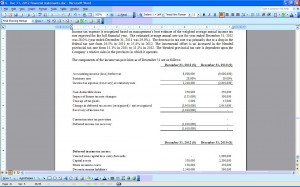A Really Easy and Useful Method to Creating Financial Statements
04
November
2013
A Really Easy and Useful Method to Creating Financial Statements
The following is an extended excerpt from my book, The CFO’s Guide to Good Corporate Governance.
The paperback version of the book is available at CreateSpace and Amazon. E-versions are available on ITunes and Amazon. If you find the content on my website useful, I would sure appreciate you picking up a copy.
If you have any questions, feel free to get in touch on Twitter or Linked In. If the images are really small on the device you are using to read this post, simply click on the image to enlarge.
:::
In 2000, I moved to the Cayman Islands and spent the better part of five years working for Deloitte in their audit department. In addition to the beautiful weather and relaxed culture, I learned a trick to preparing financial statements that I use to this day.
The toughest part to financial statement preparation for me was updating the numbers. Invariably some additional entries are made during the audit process that requires updates to the balance sheet, income statement, cash flow statement, financial statement notes and the MD&A. It is really tough to get that 100% correct every single time. From the auditor’s perspective, they end up spending a lot of time ensuring all the numbers cross reference correctly and ensuring the statements still add properly.
At Deloitte, our administrative staff addressed this issue by preparing the statements in Excel and then embedding those tables into the Word document containing the financials. I have expanded on this concept and also prepare all financial statement tables, MD&A tables and Annual Information Form (“AIF”) tables in a single Excel file.
The foundation is a summarized trial balance in the Excel file. That trial balance is linked into the various financial statement components, MD&A tables and AIF tables. If the trial balance is updated, everything else automatically updates. Because the statements are done in Excel, I can use formulas to sum the columns and add cells to confirm that everything ties together. The notes all connect back to the balance sheet. I never have to worry that the balance sheet is not balanced, nor that the cash flow statement does not tie back to the cash position.
Once you have that file set up, you have a template that you can use for every quarter and every year end. You will save hours in preparing your statements. You will be able to make adjusting entries and turn around revised draft statements in a matter of minutes.
Once your auditors understand how to navigate through your file, they will love you for it. They will have confidence that your financials tie together and will not need to devote much time to double-checking your math.
I have put a few screenshots below to show the process of embedding the Excel file into the Word document.
Step 1: In Excel, highlight and copy the table you want to insert into Word.
Step 2: Go to the place in Word you want to insert the table and select “Paste Special”.
Step 3: Switch the radio button to “Paste link” and select “Microsoft Excel Worksheet Object”.
The table is now inserted in the Word document. If you were to make changes in Excel, the table in Word would update.
Wrapping up, create every statement and table in Excel for your financial statements, MD&A and AIF. Paste everything in around the written text and you will have a quality set of materials that will be easy to update and roll forward each quarter.




